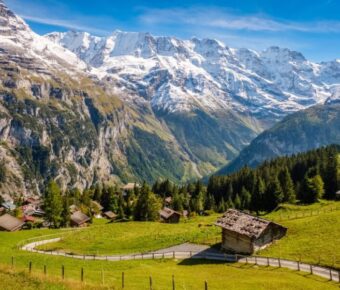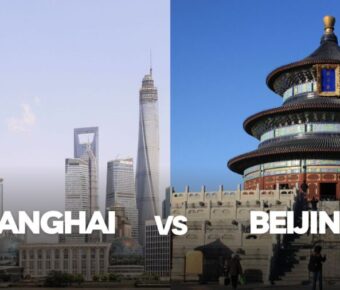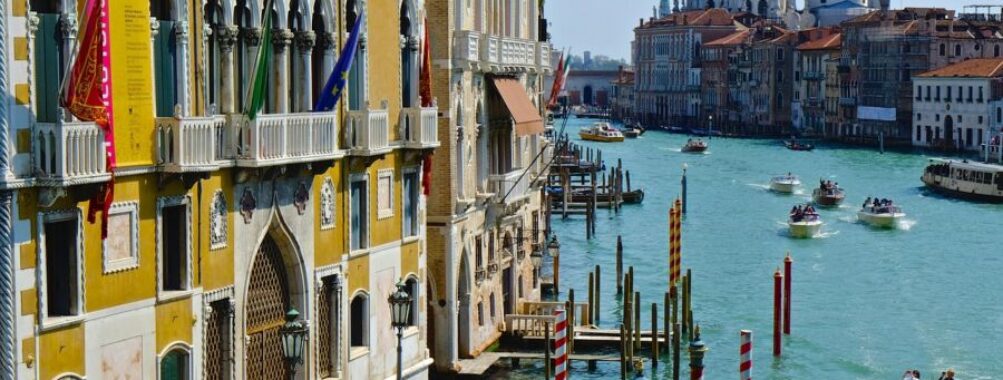
Where to Stay in Venice: The Ultimate Guide to the Best Neighborhoods and Hotels
Venice, the enchanting city of canals, is a dream destination for millions of travelers each year. With its rich history, stunning architecture, and romantic atmosphere, choosing the right place to stay can make or break your Venetian experience. In this comprehensive guide, we’ll explore the best neighborhoods in Venice, helping you find the perfect base for your Italian adventure.
Contents
- Understanding Venice’s Layout
- San Marco: The Heart of Venice
- Why Stay in San Marco?
- Pros:
- Cons:
- Top Attractions in San Marco:
- Where to Stay in San Marco:
- Cannaregio: A Blend of Local Life and History
- Why Stay in Cannaregio?
- Pros:
- Cons:
- Top Attractions in Cannaregio:
- Where to Stay in Cannaregio:
- Castello: A Taste of Local Venice
- Why Stay in Castello?
- Pros:
- Cons:
- Top Attractions in Castello:
- Where to Stay in Castello:
- Dorsoduro: Artistic Charm and Student Vibes
- Why Stay in Dorsoduro?
- Pros:
- Cons:
- Top Attractions in Dorsoduro:
- Where to Stay in Dorsoduro:
- Santa Croce and San Polo: Authentic Venice Off the Beaten Path
- Why Stay in Santa Croce or San Polo?
- Pros:
- Cons:
- Top Attractions in Santa Croce and San Polo:
- Where to Stay in Santa Croce and San Polo:
- Tips for Choosing Your Perfect Venetian Stay
- Getting Around Venice
- When to Visit Venice
- Unique Experiences in Venice
- Practical Tips for Your Venice Stay
- More Travel Guides
Understanding Venice’s Layout
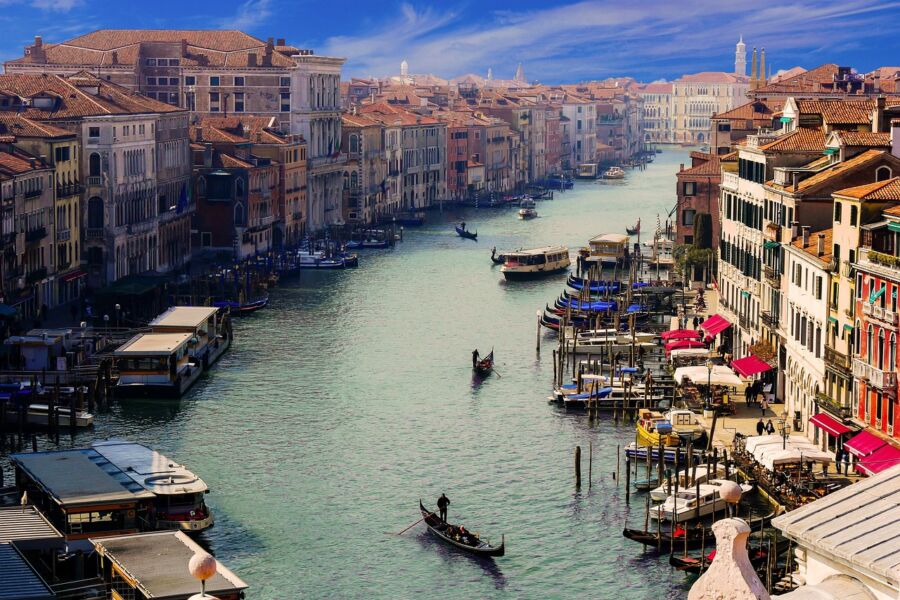
Before diving into specific neighborhoods, it’s essential to understand Venice’s unique geography. The city is divided into six main districts, called sestieri:
- San Marco
- Cannaregio
- Castello
- Dorsoduro
- Santa Croce
- San Polo
Each sestiere has its own character and charm, offering visitors different experiences. Let’s explore the top areas to stay in Venice, highlighting their pros and cons and recommending some of the best accommodations in each.
San Marco: The Heart of Venice

Why Stay in San Marco?
San Marco is the most famous and central district in Venice, home to many of the city’s iconic landmarks. It’s perfect for first-time visitors who want to be close to the main attractions.
Pros:
- Central location
- Easy access to major sights
- Vibrant atmosphere
- Excellent dining and shopping options
Cons:
- Crowded, especially during peak seasons
- More expensive than other areas
- Can feel touristy and less authentic
Top Attractions in San Marco:
- St. Mark’s Basilica
- Doge’s Palace
- Bridge of Sighs
- Rialto Bridge
- La Fenice Opera House
Where to Stay in San Marco:
Luxury: The Gritti Palace
Mid-range: Hotel Firenze
Budget: Hotel Mercurio
Cannaregio: A Blend of Local Life and History

Why Stay in Cannaregio?
Cannaregio offers a perfect balance between tourist attractions and authentic Venetian life. It’s an excellent choice for those who want to experience the local culture while still being close to the city center.
Pros:
- Less crowded than San Marco
- More affordable accommodations
- Authentic Venetian atmosphere
- Home to the historic Jewish Ghetto
Cons:
- Slightly farther from some major attractions
- Can be quieter in the evenings
Top Attractions in Cannaregio:
- Jewish Ghetto and Jewish Museum
- Ca’ d’Oro
- Madonna dell’Orto Church
- Fondamenta della Misericordia
Where to Stay in Cannaregio:
Luxury: Ca’ Sagredo Hotel
Mid-range: Hotel Ai Mori d’Oriente
Budget: Hotel Eurostars Residenza Cannaregio
Castello: A Taste of Local Venice
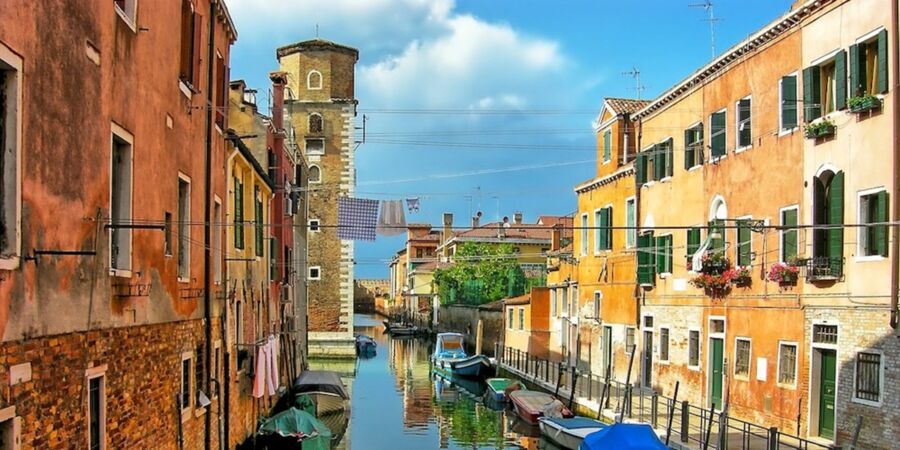
Why Stay in Castello?
Castello is the largest sestiere in Venice, offering a mix of tourist areas and quiet residential neighborhoods. It’s ideal for travelers who want to escape the crowds while still being within walking distance of major sights.
Pros:
- Less touristy atmosphere
- Beautiful parks and green spaces
- Home to the Biennale art exhibition
- More affordable than San Marco
Cons:
- Some parts can feel isolated
- Fewer dining and shopping options in residential areas
Top Attractions in Castello:
- Arsenale
- Giardini della Biennale
- Church of San Pietro di Castello
- Via Garibaldi
Where to Stay in Castello:
Luxury: Hotel Danieli
Mid-range: Hotel Bucintoro
Budget: Hotel Arsenale
Dorsoduro: Artistic Charm and Student Vibes
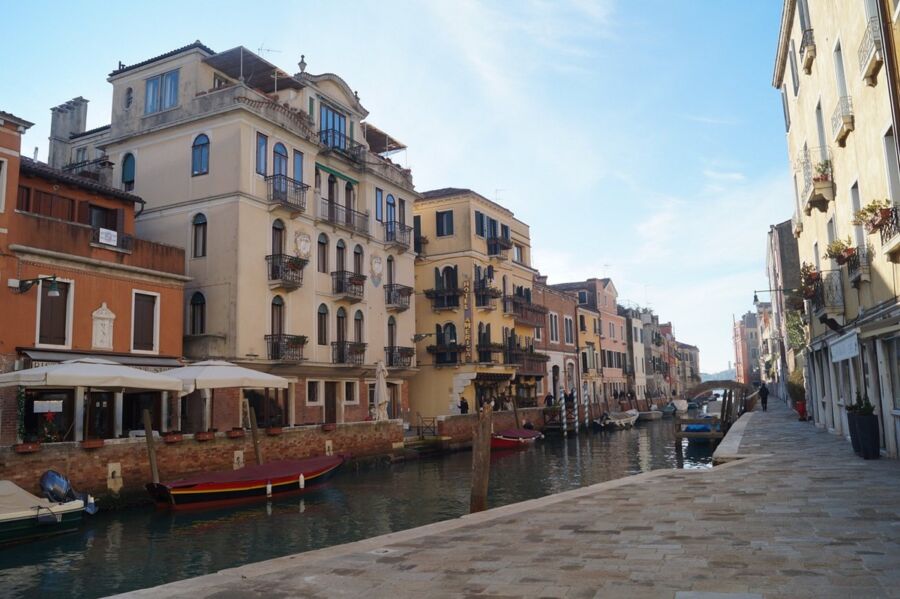
Why Stay in Dorsoduro?
Dorsoduro is known for its artistic atmosphere, world-class museums, and lively student population. It’s perfect for culture enthusiasts and those looking for a more relaxed Venetian experience.
Pros:
- Home to major museums and galleries
- Lively nightlife scene
- Beautiful views of the Grand Canal
- Less crowded than central areas
Cons:
- Farther from some major attractions
- Can be noisy in areas popular with students
Top Attractions in Dorsoduro:
- Gallerie dell’Accademia
- Peggy Guggenheim Collection
- Basilica di Santa Maria della Salute
- Campo Santa Margherita
Where to Stay in Dorsoduro:
Luxury: The St. Regis Venice
Mid-range: Hotel American-Dinesen
Budget: Hotel Tiziano
Santa Croce and San Polo: Authentic Venice Off the Beaten Path
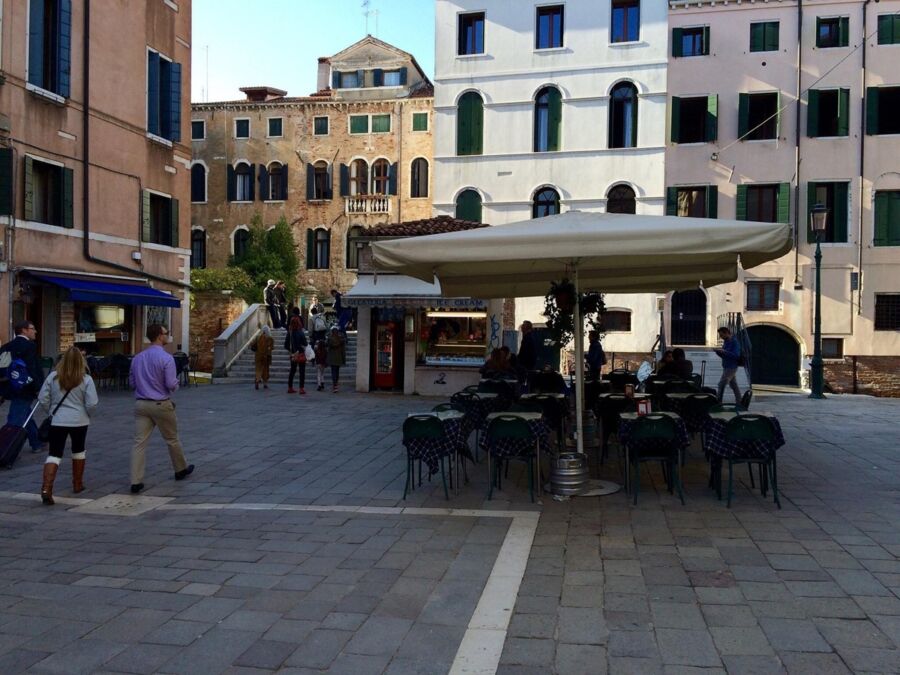
Why Stay in Santa Croce or San Polo?
These two smaller sestieri offer a more authentic Venetian experience, away from the main tourist crowds. They’re ideal for return visitors or those looking to immerse themselves in local life.
Pros:
- Authentic Venetian atmosphere
- Less crowded than central areas
- Great local restaurants and markets
- More affordable accommodations
Cons:
- Farther from major attractions
- Fewer hotel options
Top Attractions in Santa Croce and San Polo:
- Scuola Grande di San Rocco
- Church of Santa Maria Gloriosa dei Frari
- Rialto Market
- Palazzo Mocenigo
Where to Stay in Santa Croce and San Polo:
Luxury: Aman Venice
Mid-range: Hotel L’Orologio Venice
Budget: Hotel ai due Fanali
Tips for Choosing Your Perfect Venetian Stay
- Consider your priorities: Do you want to be close to attractions, or do you prefer a quieter, more local experience?
- Check transportation options: Venice is a walkable city, but you’ll also rely on vaporetti (water buses) to get around. Ensure your accommodation is near a vaporetto stop.
- Be aware of high water: Some areas of Venice are prone to flooding during acqua alta (high water) seasons. Check if your hotel provides raised walkways or boots during these times.
- Look for inclusive amenities: Many Venice hotels offer complimentary breakfast and Wi-Fi. These can add significant value to your stay.
- Read recent reviews: Venice accommodations can vary greatly in quality. Always check recent guest reviews before booking.
- Consider staying on the mainland: If you’re on a tight budget, consider staying in Mestre on the mainland and commuting to Venice by train or bus.
Getting Around Venice
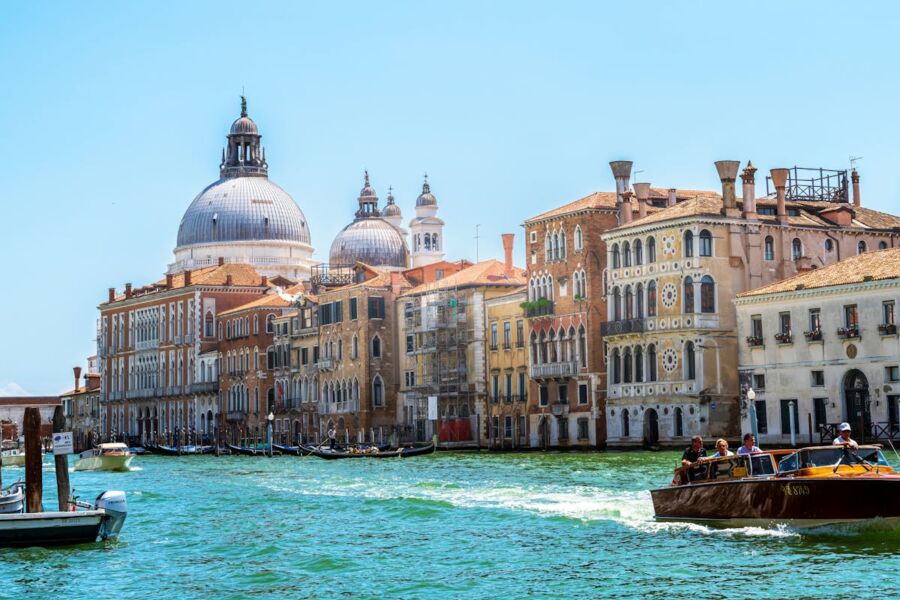
Venice’s unique layout means traditional transportation methods don’t apply. Here’s how to navigate the city:
- Walking: Venice is a pedestrian’s paradise. Many of the city’s charms are best discovered on foot, wandering through narrow alleys and over picturesque bridges.
- Vaporetti: These water buses are the main form of public transportation in Venice. They run frequently along the Grand Canal and to outlying islands. A single ride can be expensive, so consider purchasing a multi-day pass if you plan to use them often.
- Traghetti: These gondola-like boats ferry passengers across the Grand Canal at specific points. They’re an affordable way to experience a gondola-like ride.
- Water taxis: More expensive than vaporetti but faster and more direct. They’re a good option if you’re in a hurry or have a lot of luggage.
- Gondolas: While primarily a tourist attraction, a gondola ride can be a romantic way to see the city. Be sure to agree on the price and duration before starting your ride.
When to Visit Venice
- Spring (March to May): Mild weather and fewer crowds make this an ideal time to visit. The Venice Biennale, a major art exhibition, typically starts in May of odd-numbered years.
- Summer (June to August): Peak tourist season with warm weather but large crowds and higher prices. The Venice Film Festival takes place in late August/early September.
- Fall (September to November): Cooler temperatures and fewer tourists make for a pleasant visit. Be prepared for potential acqua alta (flooding) in November.
- Winter (December to February): The coldest months, but also the quietest. Venice’s Carnival takes place in February, bringing colorful festivities and larger crowds.
Unique Experiences in Venice
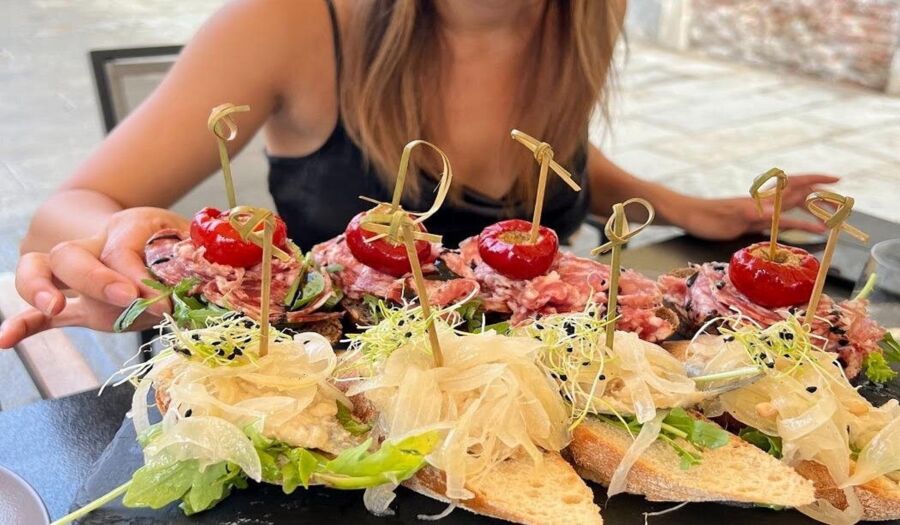
To truly appreciate Venice, consider adding these experiences to your itinerary:
- Take a food tour: Explore Venice’s cicchetti bars (similar to Spanish tapas) and sample local specialties.
- Visit the outer islands: Take a day trip to Murano (famous for glass-making), Burano (known for lace and colorful houses), or Torcello (home to ancient churches).
- Attend a classical concert: Enjoy a performance in a historic venue like the Church of San Vidal.
- Explore the Secret Itineraries Tour of Doge’s Palace: This special tour takes you behind the scenes of the palace, including the prison cells.
- Take a mask-making workshop: Learn about the history of Venetian masks and create your own.
Practical Tips for Your Venice Stay

- Pack comfortable walking shoes: Venice’s streets and bridges can be challenging in heels or uncomfortable footwear.
- Bring a reusable water bottle: Venice has many fountains with drinkable water.
- Learn a few Italian phrases: While many Venetians speak English, knowing some basic Italian can enhance your experience.
- Respect local customs: Dress modestly when visiting churches, and avoid sitting or eating on steps or bridges.
- Be prepared for acqua alta: If visiting during potential flooding seasons, pack waterproof boots or be prepared to purchase them in Venice.
Choosing where to stay in Venice is crucial for making the most of your visit to this unique city. Whether you prefer the bustling energy of San Marco, the local charm of Cannaregio, or the artistic atmosphere of Dorsoduro, Venice has a neighborhood to suit every traveler’s taste.
Remember that Venice is a city to be savored slowly. Don’t try to rush from one attraction to another. Instead, allow yourself time to get lost in the winding streets, discover hidden campi (squares), and soak in the magical atmosphere that makes Venice one of the world’s most beloved destinations.
By considering your priorities, budget, and desired experiences, you can find the perfect base for your Venetian adventure]

